Our Global Grant
SAFE AND RELIABLE WATER FOR FIVE COMMUNITIES IN SOUTHERN ECUADOR
Region: South America Country: Ecuador Location: Zapotillo & Puyango Municipalities
Total Budget: $69,420
Area of Focus: Water and Sanitation
This grant supports five communities in southern Ecuador to access safe and reliable drinking water. Over one thousand people live in these rural communities and rely on locally run water systems to meet their basic needs. By repairing water systems, protecting and restoring water sources, and providing technical training on water management and conservation, these communities will be able to meet their basic needs for water and sanitation.
The five communities (Cazaderos, Gramadales, Cabeza de Toro, El Arenal, and Cochas de Ciano) are located in the municipalities of Zapotillo and Puyango in the dry forest of southern Ecuador. The tropical dry forest is the most ecologically threatened ecosystem in Ecuador. It is also an ecosystem that exposes its inhabitants to weather extremes. Communities depend on the four-month rainy season to provide water throughout the year, including the eight-month dry season. The key to ensuring water availability during the dry season is the conservation of local forests and water catchment areas (sources).
Despite the critical role that these water catchment areas play, many are being degraded by livestock and agricultural activities which affect water quality, contaminating the water supply with E.coli bacteria and fertilizers. Cattle also diminish the capacity of vegetation to retain precious water from rainy season in the soil to last into the dry season. In addition to the threats at the water source, the communities report that their water systems are also not being well managed and need repairs at both the intake and treatment areas.
To overcome these challenges, the project focuses on three main components:
- Repair damaged water systems: The repair of water systems will allow water to be treated adequately and prevent leakage so that users can have clean and more abundant drinking water.
- Comprehensive training on water system management, sanitation, and hygiene: Local leaders will be trained on the generation, conservation, collection, and treatment of the water as well as optimizing their water systems and distribution. This component will ensure the availability of water in the communities and the longer-term sustainable management of the water systems. The community members will also learn better habits to ensure proper sanitation and hygiene.
- Conservation and restoration of water sources: Agreements will be signed with local farmers who own or use land in the catchment area. In collaboration with community leaders, the project will educate them on the importance of conserving the water source and identify incentives for them to identify alternatives to using fertilizers and grazing/ watering cattle in the catchment area. Examples include, fences, water pumps to pump water for their cattle away from the catchment area and/or provide them seeds and tools to farm in alternate areas and/or using alternative methods.
Rotary volunteers from District 5340 and 4400, are working together with the organization Nature and Culture International to ensure water for local people in Zapotillo and Puyango. Nature and Culture International is a non-profit organization who has worked over 20 years to conserve Ecuador’s dry forest, in concert with local communities.
This global grant is sponsored by seven clubs (SBECO, the Rotary Clubs of Escondido Sunrise, Encinitas, San Marcos, Del Mar, Rancho Bernardo, and Rancho Santa Fe) and two districts (D5340 and D4400). It has been approved by The Rotary Foundation in May 2022 and the project is currently in progress.
- 160 families benefited in Zapotillo Canton.
- 215 families benefited in Puyango Canton.
- On average, the project has benefited 1400 people, considering 3.8 people per family.
- Informative signs have been installed in all five communities
- In Puyango Canton, 4 conservation agreements were signed (2 for Las Cochas intake and 2 for El Arenal intake), conserving a total of 16.76 hectares (41.4 acres), distributed as 5.76 hectares (14 acres) in Las Cochas and 11 hectares (27 acres) in El Arenal intake.
- Environmental awareness activities were carried out in Zapotillo Canton, including the creation of brochures, training on water protection, use, and management, and exchanges of experiences with water boards to learn about the management, protection, conveyance, and administration of water intakes.
|
|||
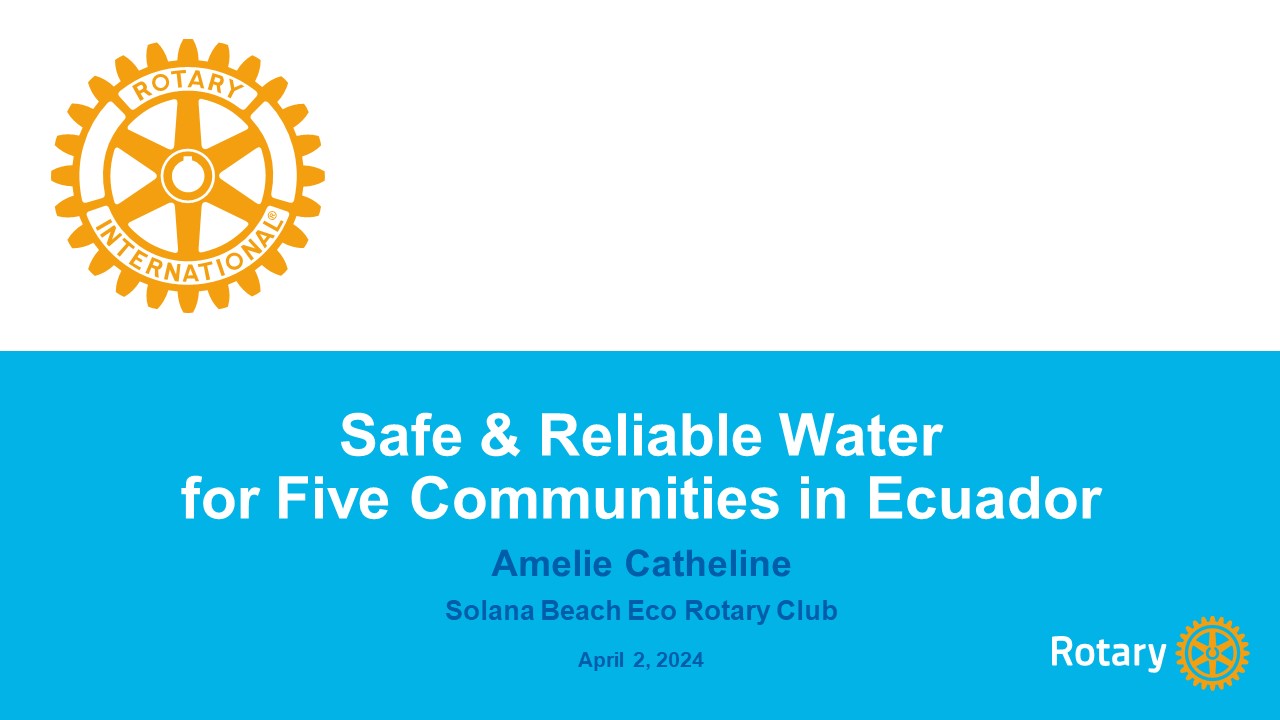 |
 |
 |
|
 |
 |
|
|
|
||||||
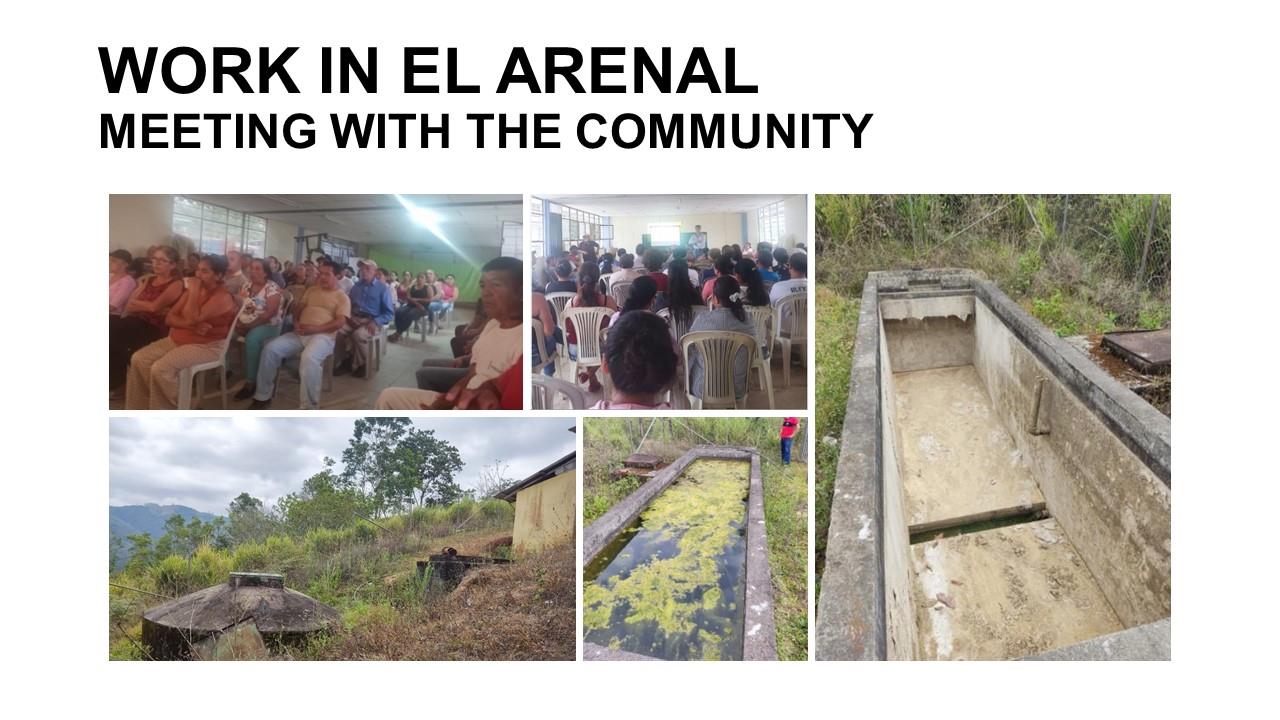 |
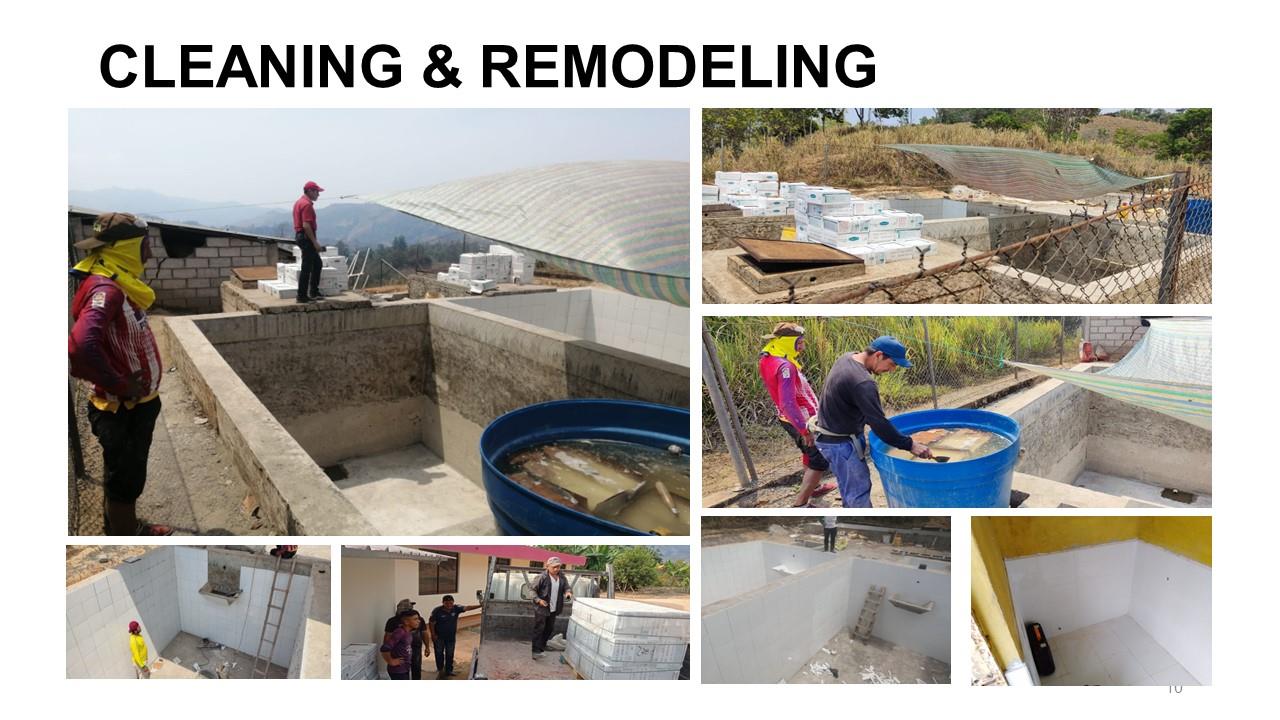 |

|
||||
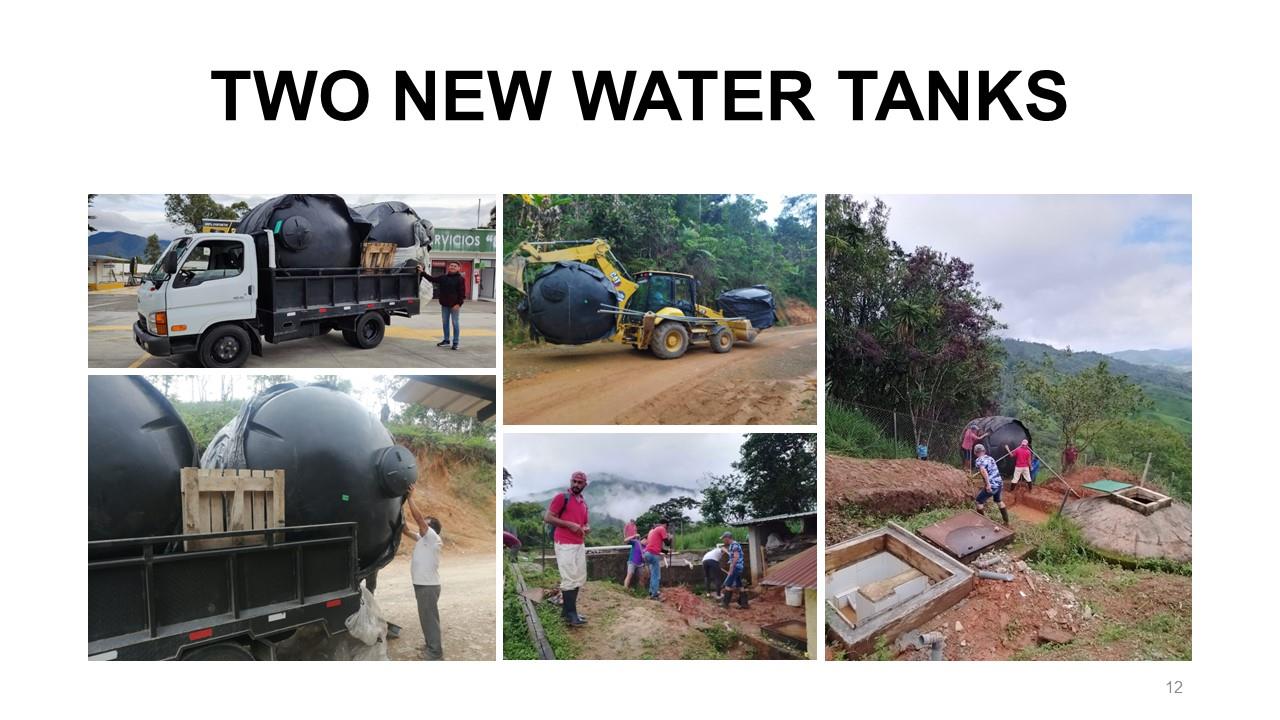 |
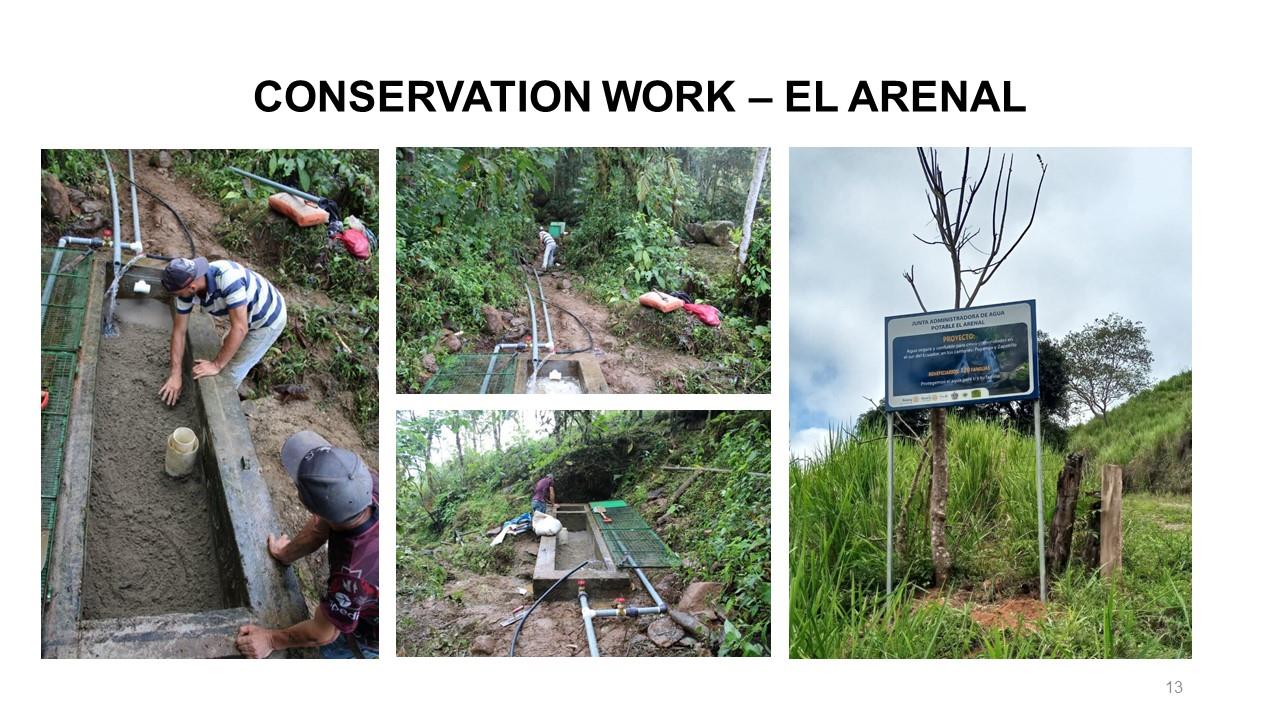
|
|
||||
|
El Arenal (Puyango)
Beneficiaries of the system: 120 families.
Engineering cost: $14,218.65, and work:
The water treatment plant showed the worst situation in terms of water quality and distribution. Thus, the work schedule was modified to address the repairs first in this community along with the repairs in Cochas de Ciano. The work started in October 2022 with organizing the workforce of the local community, cleaning the water treatment plant. Then the actual remodel work started with the demolition of the old concrete in the water intake tank and the filters. Transportation of material was particularly difficult due to the bad conditions of the roads/paths. Material was transported by mules. The repairs continued with casting the new concrete, the installation of the ceramic tiles in the intake tanks, filters and sand separators. The main repair work of the water treatment plant was completed in January 2023. The conveyance and distribution lines were then installed. The water treatment plant was completed with the addition of two 5,000-litter cisterns and the filter tanks were equipped with piping for sand filtration.
Conservation work:
The water source is located on two private properties. Each area has been protected under an agreement with the landowners. The area is in good condition, and fencing work was needed. The total area of protected forest and ecosystem is 27 acres, under two agreements with the private owners.
Together with the president and operator of the El Arenal Water Board and the municipality of Puyango, maintenance or restoration work was carried out in the catchment area, including the placement of illustrative and informative signs. The objective is to inform, prevent, and raise awareness about the care of water production areas for human consumption.
|
||
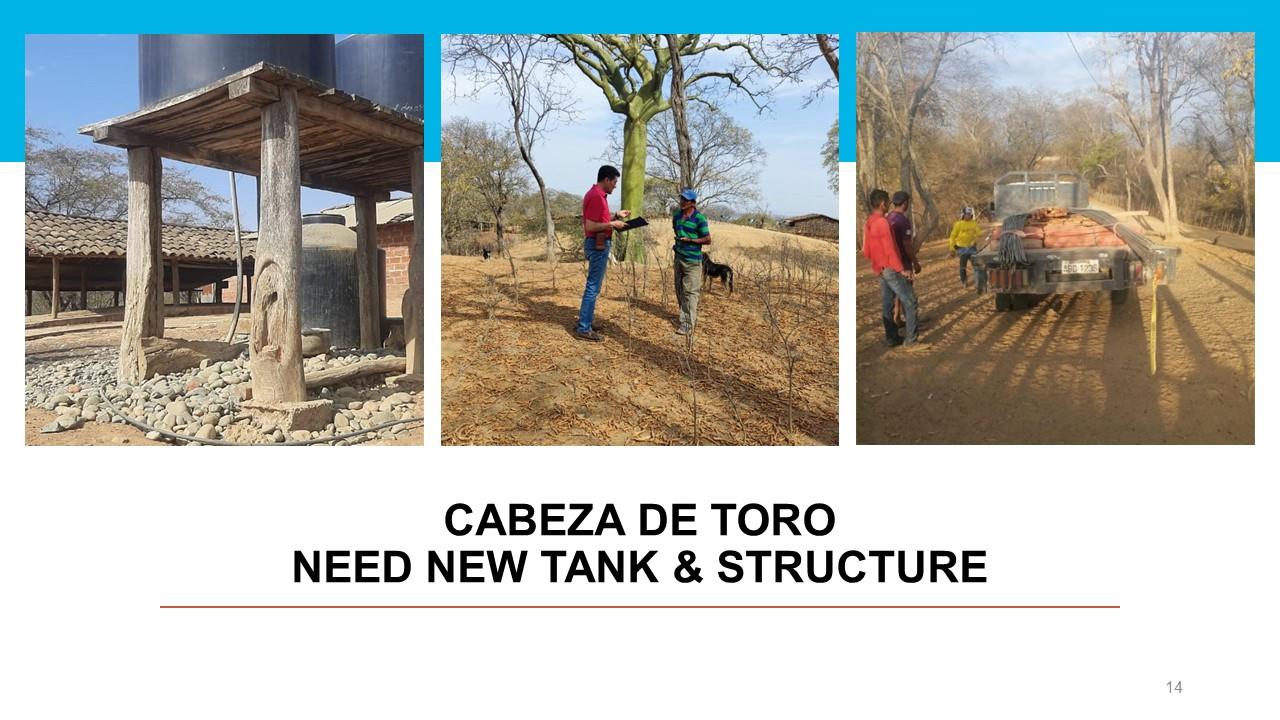 |
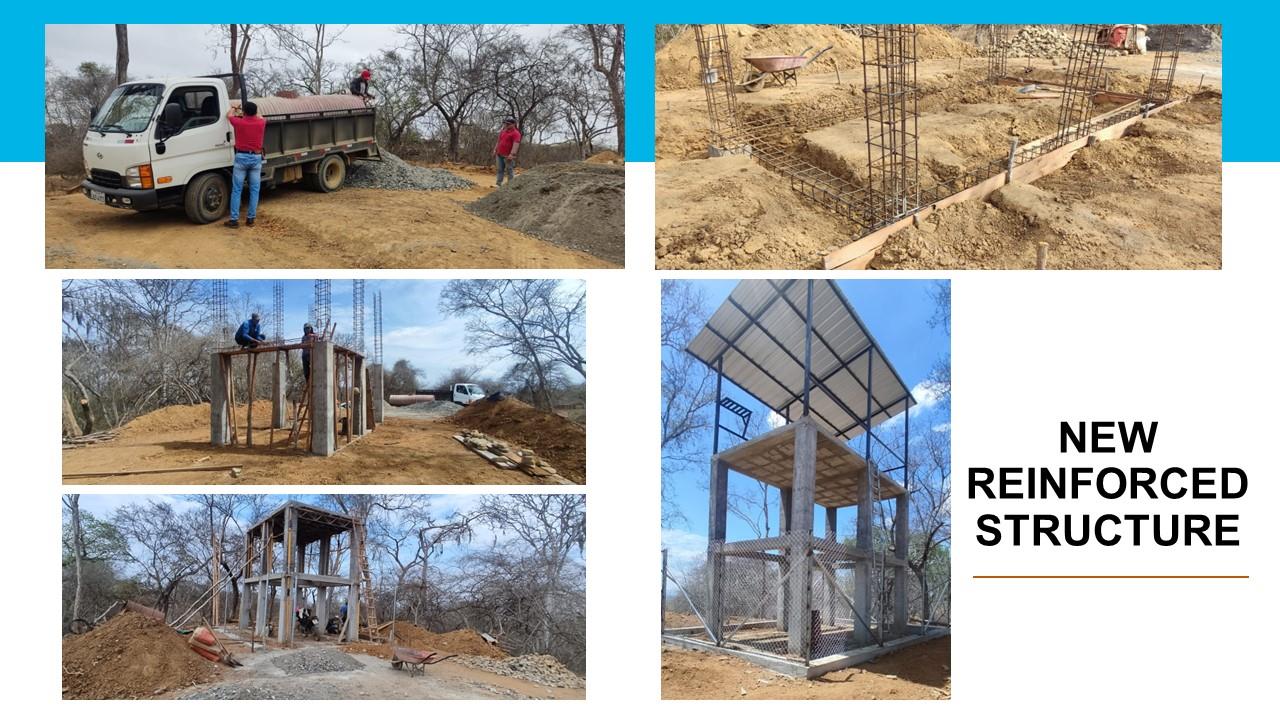
|

|

|
|
|
|
Cabeza de Toro (Zapotillo)
Beneficiaries of the system: 15 families.
Engineering cost: $14,245.60, and work:
The configuration of the infrastructure is unique in this location compared to the four other communities. The reservoirs are placed on an elevated structure engineered to support water tanks. The project allows for a structure higher than the old structure to get a higher pressure in the distribution lines. They started by choosing the location of this structure and excavating the ground to build the new structure. The built of the structure started in December 2022. It required the transportation of water to make concrete (no water was available on site); several 2-hr trips were necessary. The construction of the platform started in December 2022 and was completed in February 2023. The new structure is enclosed and has a roof to protect the tanks.
A community effort was organized to reconnect the water system to the new tank. This collective effort was organized on the date of the project's presentation and the delivery of the informational brochure, in September 2023. Extreme flooding at the beginning of 2023 caused the important delay as it washed away roads and cut the access to this rural village.
Conservation work:
The following was recorded during the assessment: 1) scarce vegetation in the influence zone, 2) the presence of goats, 3) the catchment area with sparse vegetation. The animals have unrestricted access to the area.
Activities of the project included planting native species in water catchment areas. In this case, various native tree species were used for reforestation in the catchment area of the Cabeza de Toro Water Board.
Gramadales (Zapotillo)
Beneficiaries of the system: 25 families.
Engineering cost: $3,743.79, and work;
All the needed materials was delivered to the community for installation. Additionally, a scheme for installing valves and accessories to repair the pressure break tanks was provided. Officials from the Gramadales Water Board participated in the delivery, with Miss Joselin Aponte, a member of the Cazaderos Parish Council, serving as an honorary witness.
Conservation work:
Evidence was recorded, indicating 1) abundant vegetation in the influence zone, 2) low presence of animals recorded on the day of inspection, 3) implemented fences.
For the Gramadales community, a conservation agreement was signed, (no private owners in this case) wherein the main activities were to be carried out in collaboration with the neighboring community of Gramadales (Chaguarhuayco).
These activities have included:
A project sign has been installed as well, with the assistance of the community. In addition to these activities, training on the proper management of water sources and their catchment area has also led to the community's commitment to protect the enclosure that surrounds the catchment area.
|
|||||
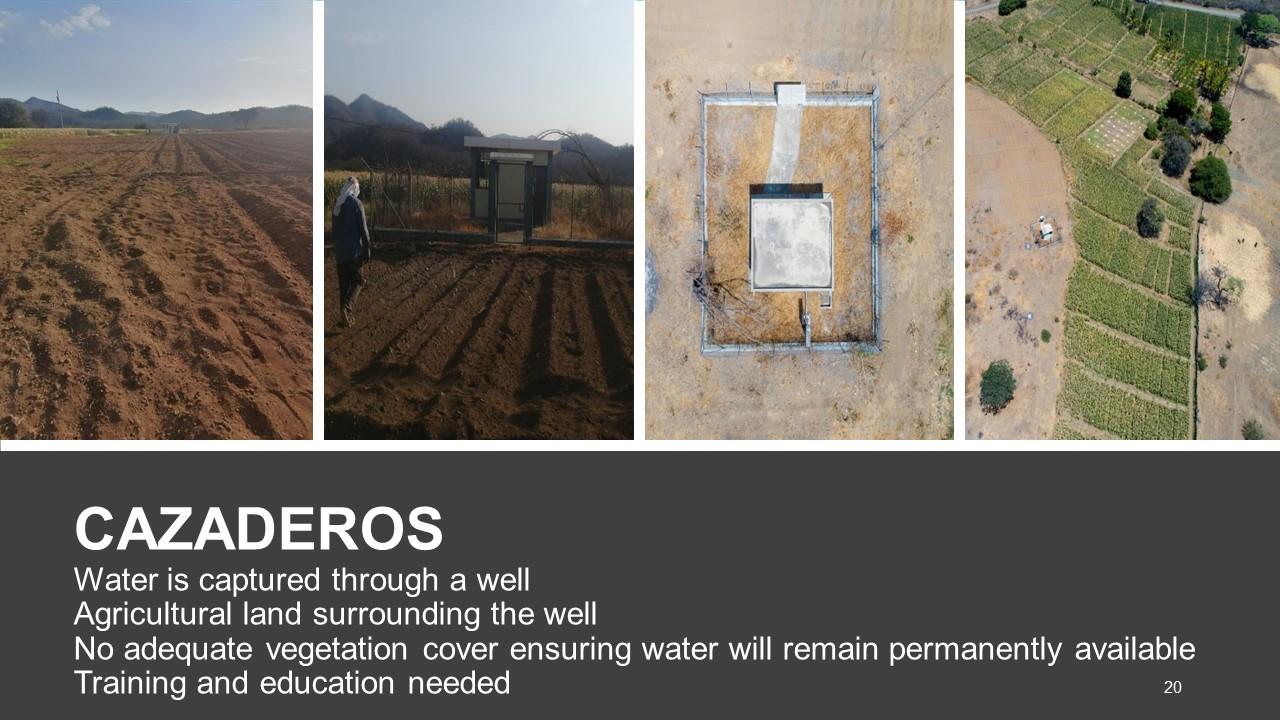
|
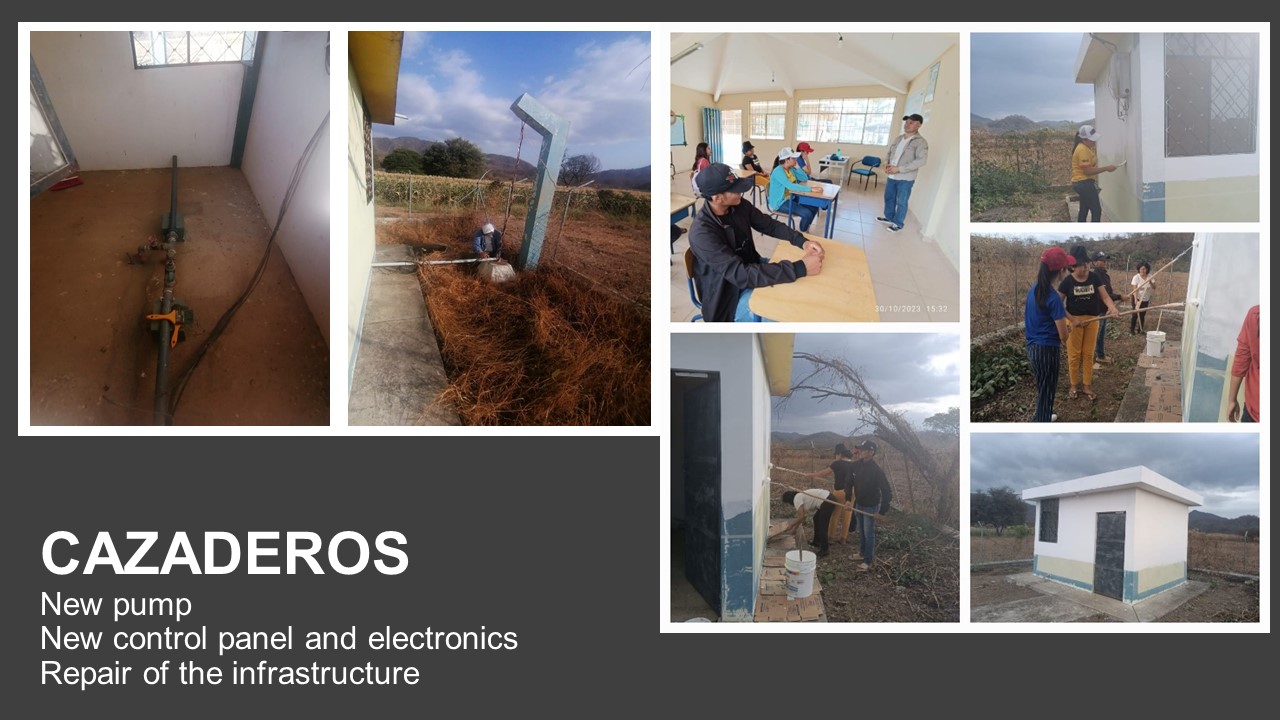
|

|
|||
|
|
|
|
|||
- Rehabilitation of the storage tank.
- Beautification of the chlorination area and water treatment.
- Protection of the doors in the chlorination area infrastructure.
- Improvement of the infrastructure in the physical water treatment area.
- the Cazaderos community and
- the Plaza Ledesma Educational Unit.
- Project awareness and measures to improve the chlorination area of the Cazaderos Water Board were disseminated.
- Commitment from the local community to keep the catchment area clean, free from agrochemical bags, and other materials that could harm the water quality of the catchment area.
- Legalization of the water board with the regulatory body (MAATE).
- Creating of the internal regulations for the Cazaderos Water Board.
- Regulating and updating the consumer register for the Cazaderos Water Board.
- Regulating and monitoring the water usage by consumers within the Cazaderos Water Board.
- Legalizing new users for the Cazaderos Water Board.
- Participation of students from the Plaza Ledesma Educational Unit in training sessions on the use of water from the Cazaderos Water Board.
- Participation in the improvement of the catchment area of the Cazaderos Water Board.
- Support provided by students in water conservation.
 |
- Protection of the area to prevent the entry of animals.
- Delimitation of human activities within the catchment area.
- Community commitments to ensure the effective administration of the water system.
- Well-preserved catchments.
- Information about poorly preserved catchments.
- Comprehensive management of water sources.

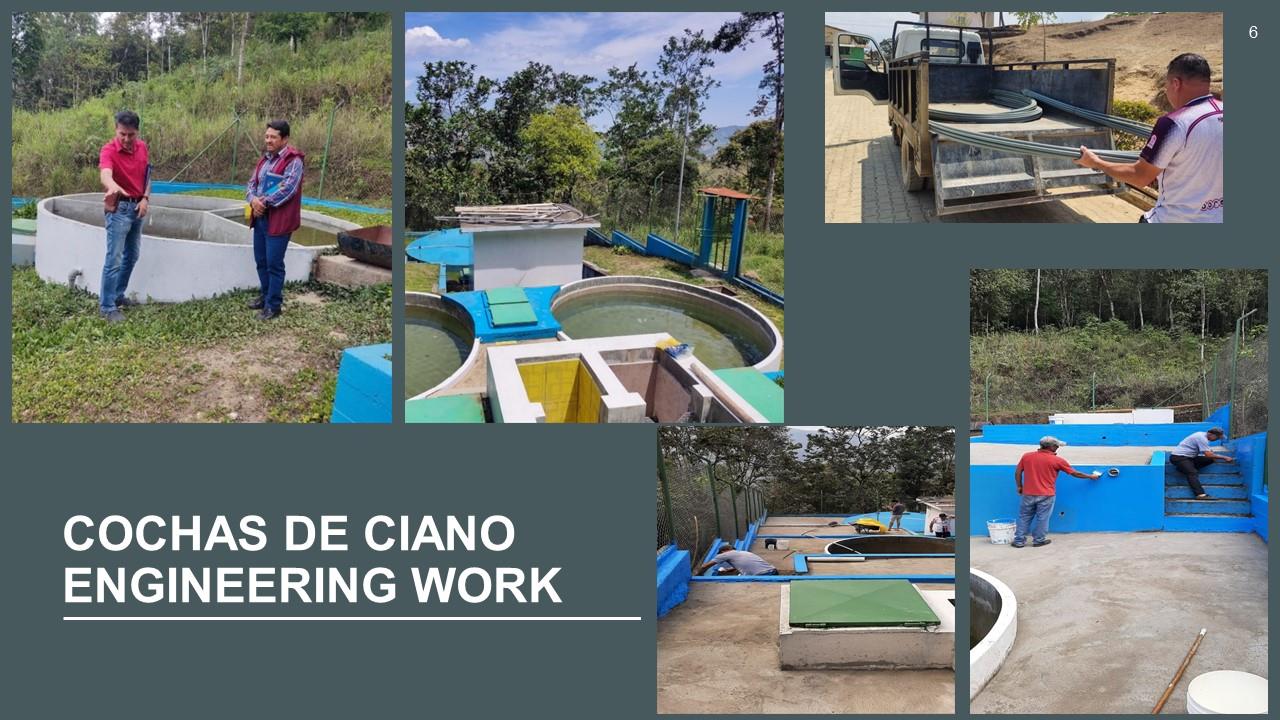

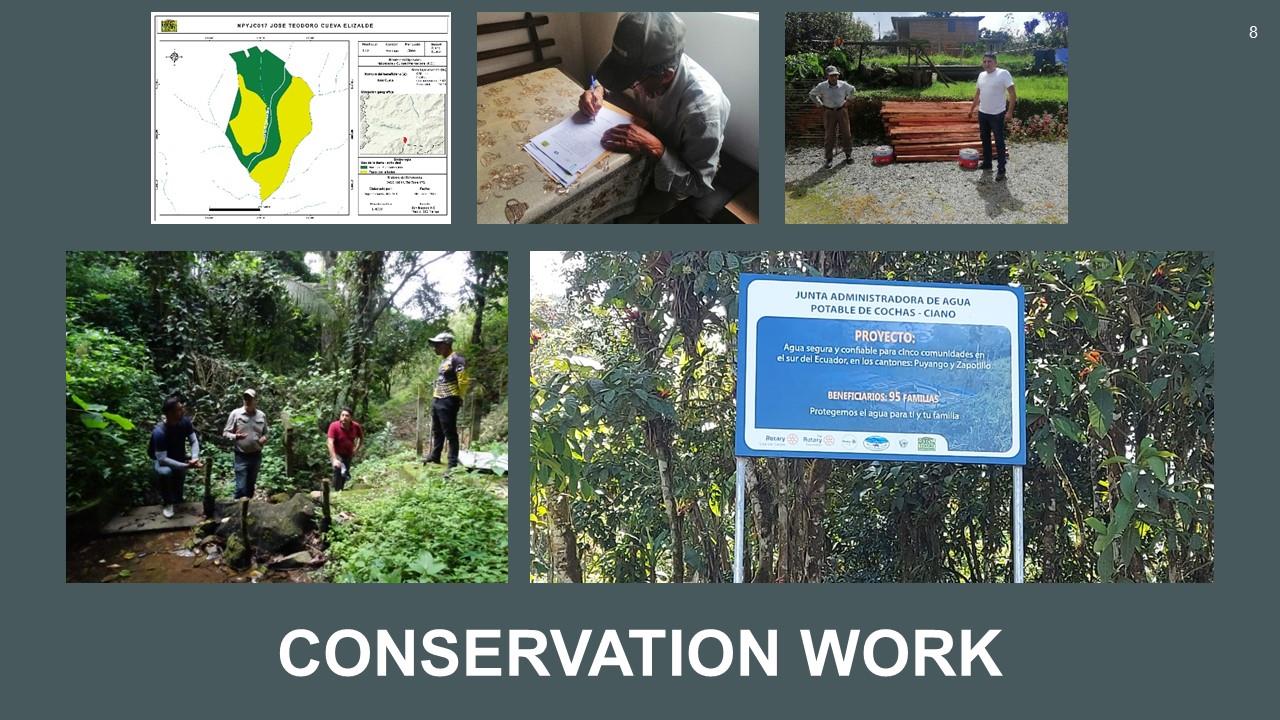
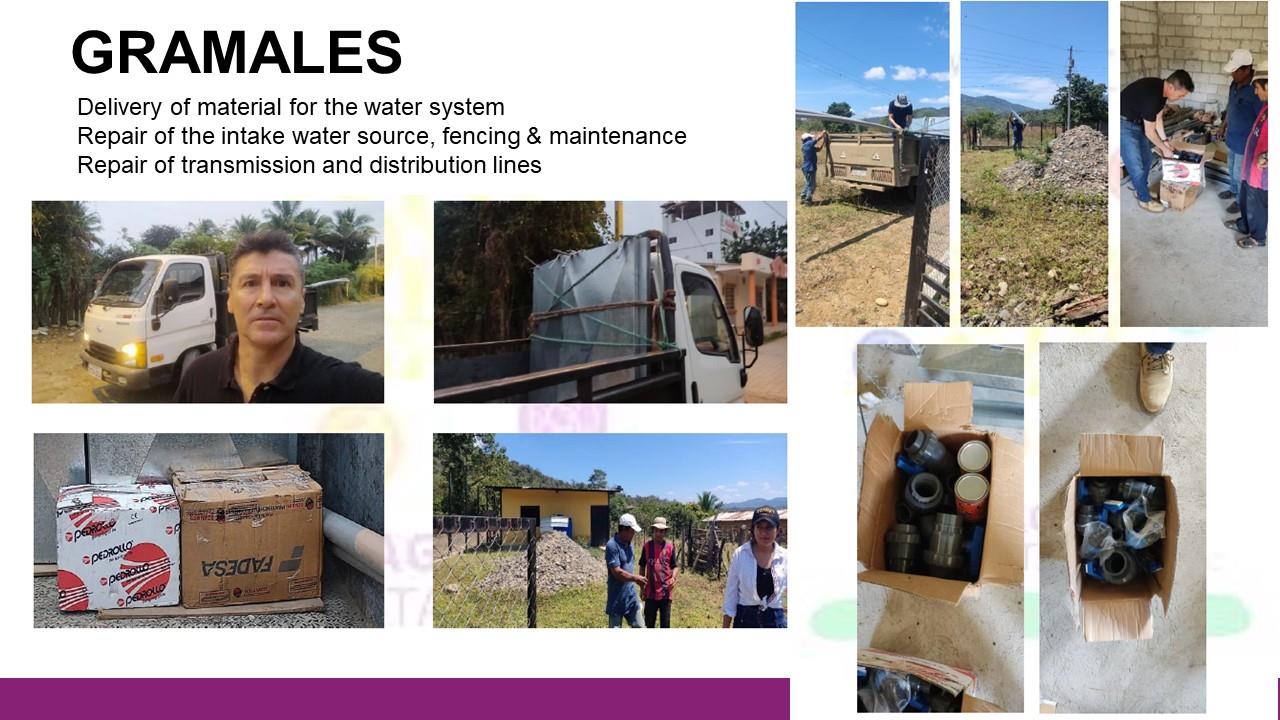

.png)












